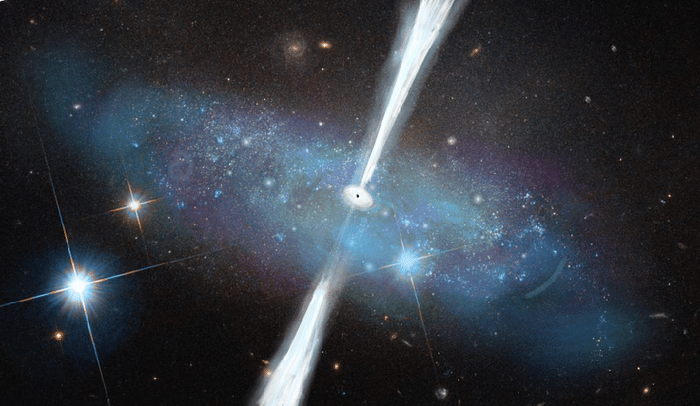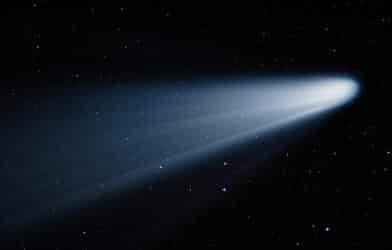Astronomers have found a trove of massive black holes that were hiding in plain sight. Researchers from the University of North Carolina at Chapel Hill discovered the black holes in dwarf galaxies.
The discovery adds to evidence that massive black holes are more common in dwarf galaxies than previously thought.
“This result really blew my mind because these black holes were previously hiding in plain sight,” says Mugdha Polimera, study lead author and UNC-Chapel Hill Ph.D. student, in a statement.
Professor Sheila Kannappan, who co-authored the paper, compares the black holes to lightning bugs. They glow intensely when they ingest gas and have stardust swirling around them. “Just like fireflies, we see black holes only when they’re lit up — when they’re growing — and the lit-up ones give us a clue to how many we can’t see,” explains Kannappan.
During the study, researchers found that some galaxies were sending mixed messages as two tests indicated growing black holes, but a third test would indicate only star formation. “Previous work had just rejected ambiguous cases like these from statistical analysis, but I had a hunch they might be undiscovered black holes in dwarf galaxies,” says Kannappan.
Study co-author Chris Richardson, an associate professor at Elon University, confirmed the “mixed-message test results exactly matched what theory would predict for a primordial-composition, highly star-forming dwarf galaxy containing a growing massive black hole.”
“The fact that my simulations lined up with what the Kannappan group found made me excited to explore the implications for how galaxies evolve,” says Richardson.
Polimera constructed a new census of growing black holes by obtaining published measurements of visible light spectral features to test for black holes in thousands of galaxies. She gave attention to both traditional and mixed-message types.
“It was important to me that we didn’t bias our black hole search toward dwarf galaxies,” says Polimera. “But in looking at the whole census, I found that the new type of growing black holes almost always showed up in dwarfs. I was taken aback by the numbers when I first saw them.”
Polimera found that more than 80% of all growing black holes she found in dwarf galaxies belonged to the new type. “We all got nervous,” she adds. “The first question that came to my mind was: Have we missed a way that extreme star formation alone could explain these galaxies?”
Polimera led an exhaustive search for alternative explanations, but in the end, the team concluded the newly identified black holes were real.
“We’re still pinching ourselves,” says Kannappan. “We’re excited to pursue a zillion follow-up ideas. The black holes we’ve found are the basic building blocks of supermassive black holes like the one in our own Milky Way. There’s so much we want to learn about them.”
The study is published in The Astrophysical Journal.










-392x250.png)

